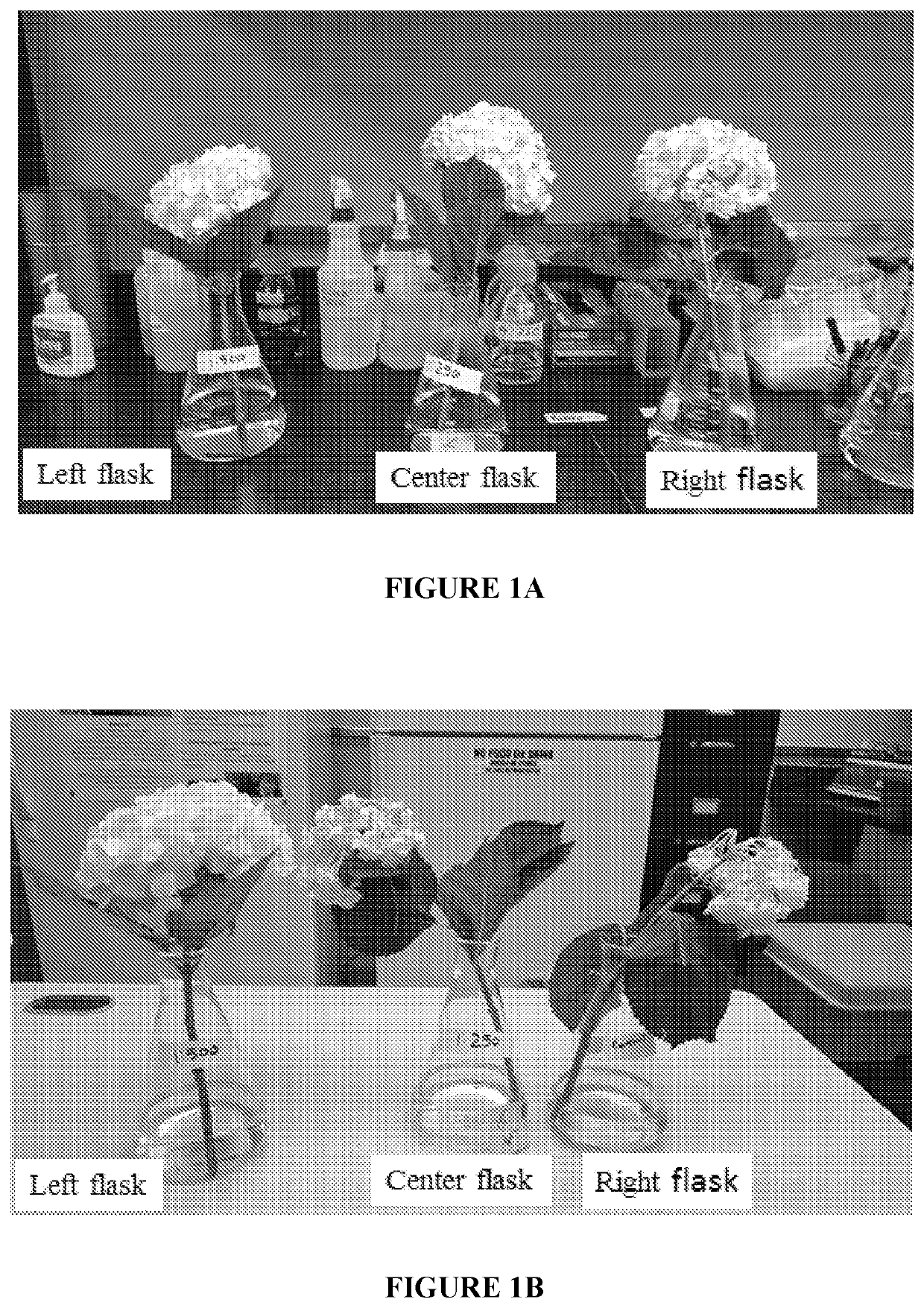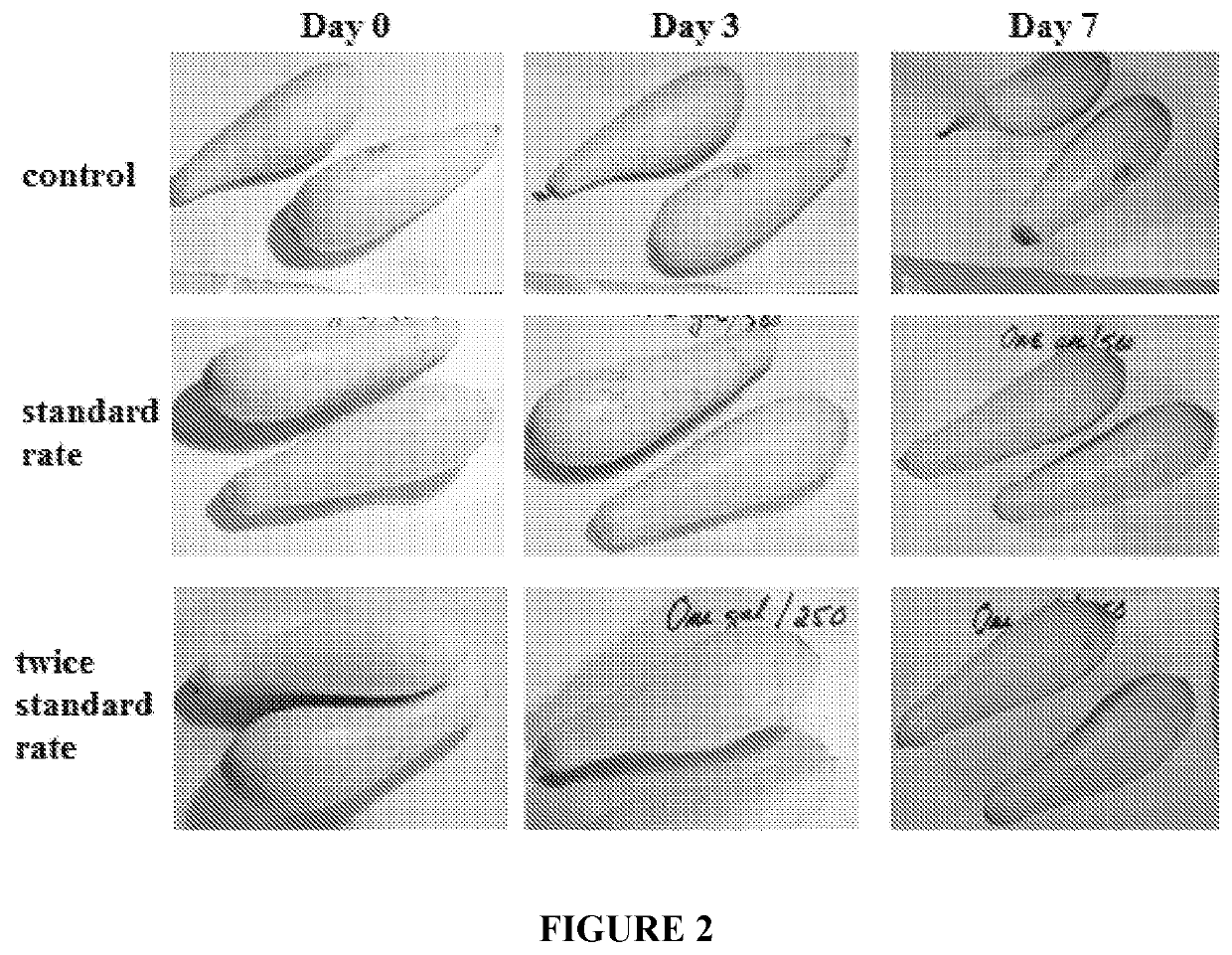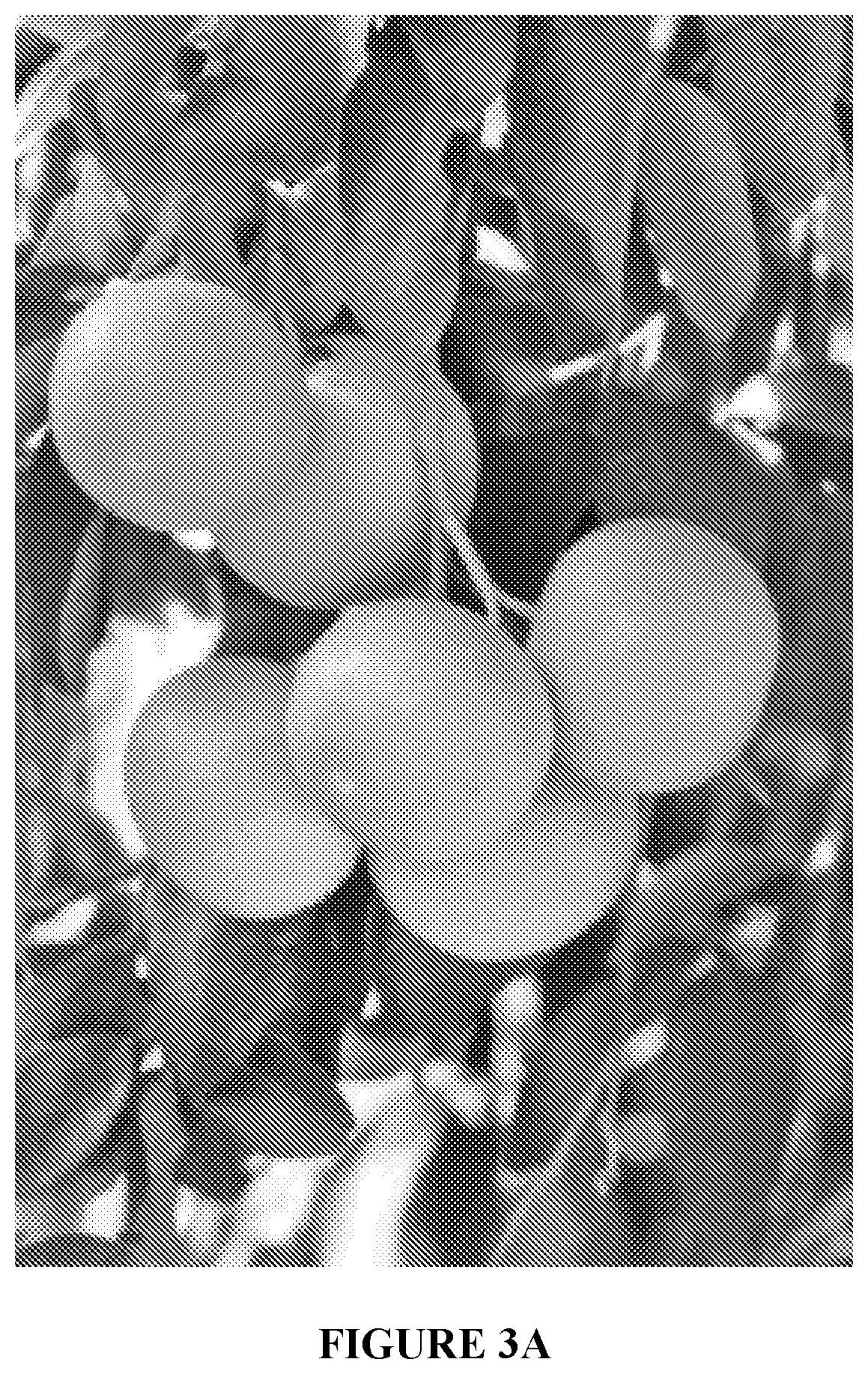Treatment for plants in conjunction with harvesting
- Summary
- Abstract
- Description
- Claims
- Application Information
AI Technical Summary
Benefits of technology
Problems solved by technology
Method used
Image
Examples
example 2
ention and Disease Protection in Harvested Yellow Squash
[0123]Harvested yellow squash were spray treated at the standard rate (a 1:500 dilution of a concentrated treatment formulation in water) or twice the standard rate (a 1:250 dilution of a concentrated treatment formulation in water) with an aqueous treatment formulation. Squash treated at the standard rate was sprayed with an aqueous treatment formulation 95.70 wt % water, 2.00 wt % ACUSOL® 823, 0.10 wt % PVA (100,000 MW), 0.10 wt % ZnSO4 monohydrate, 0.10 wt % Antifoam® 8810, and 2.00 wt % TEA. Unsprayed harvested yellow squash were used as control. Treated and untreated control squash were incubated at 73° F. for seven days. FIG. 2 shows squash on Days 0, 3, and 7 after treatment. On Day 3, the squash showed evidence of decay. Control fruit exhibited dehydration and slight decay around the stem end of the fruit (FIG. 2). Similar evidence of desiccation was present on fruit treated at twice the standard rate, although this was...
example 3
ention and Disease Protection in Harvested Grapefruit
[0124]Grapefruit trees were separated into three groups. Fruit in Groups 1 and 2 were treated prior to harvesting. Group 1 was treated with an aqueous treatment formulation comprising 95.70 wt % water, 2.00 wt % ACUSOL® 823, 0.10 wt % PVA (100,000 MW), 0.10 wt % ZnSO4 monohydrate, 0.10 wt % Antifoam® 8810, and 2.00 wt % TEA. Group 2 was treated with mono potassium phosphate (“MKP”), a commercial fertilizer. Group 3 was untreated and served as a control. Group 1 and 2 fruit were spray treated on Day −14 in the grove. Fruit was not de-greened. Fruit was weighed on Day 0, prior to packaging. Size 27-36 fruit were packed in honeycomb cartons, whereas size 40 fruit was packed in regular ⅘ cartons. Packed fruit was inspected on Day 68. As shown in Table 10 below, Group 1 fruit exhibited the least amount of water loss. The difference
TABLE 10Water Retention and Disease Protection in Harvested GrapefruitΔWeightFruitWeight (lbs)WeightDiffer...
example 4
ention and Disease Protection in Harvested Grapefruit
[0125]Grapefruit was harvested on Day 0 and packed on Day 6. Packed fruit was refrigerated at 48° F. on Day 8. On Day 54, fruit was held at the ambient temperature of the packing house, which ranged from 68-72° F. at night and 78-82° F. during the day. Harvested grapefruit were separated into two groups. Group 1 was used as an untreated control. Group 2 was treated prior to harvest with an aqueous treatment formulation comprising 95.70 wt % water, 2.00 wt % ACUSOL® 823, 0.10 wt % PVA (100,000 MW), 0.10 wt % ZnSO4 monohydrate, 0.10 wt % Antifoam® 8810, and 2.00 wt % TEA. As shown in Table 12,
TABLE 12Post-Harvest Water Retention and Disease Protection in GrapefruitWeight (lbs)Δ WeightDiseaseFruitGroupSizeDay 8Day 54Day 100(lbs)RotAnthracnoseCondition14836.2——————4836.836.033.53.310fruit ok4035.835.533.52.3414034.834.531.03.8313634.233.531.03.2413634.834.031.03.8103234.2——————3233.232.529.53.750fruit soft24836.435.534.32.111fruit sof...
PUM
 Login to View More
Login to View More Abstract
Description
Claims
Application Information
 Login to View More
Login to View More - R&D
- Intellectual Property
- Life Sciences
- Materials
- Tech Scout
- Unparalleled Data Quality
- Higher Quality Content
- 60% Fewer Hallucinations
Browse by: Latest US Patents, China's latest patents, Technical Efficacy Thesaurus, Application Domain, Technology Topic, Popular Technical Reports.
© 2025 PatSnap. All rights reserved.Legal|Privacy policy|Modern Slavery Act Transparency Statement|Sitemap|About US| Contact US: help@patsnap.com



